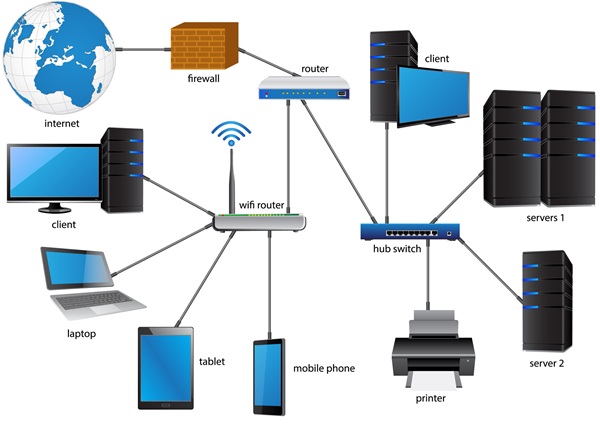
- Home
- Introduction
- History of Networking
- Terminologies
- Switching Techniques
- Transmission Media
- Network Devices
- Network Topologies
- Types of Networks
- Network Protocols
- Mobile Communication Protocols
- Mobile Communication Technologies
- Email Protocols
- VoIP
- Wireless Technologies
- Network Security
- Firewall
- Cookies
- Hacking
- Security Acts & Laws
- Web Services
Types of Networks
Networks can be categorized depending on size, complexity, level of security, or geographical range. We will discuss some of the most popular topologies based on geographical spread.
PAN
PAN is the acronym for Personal Area Network. PAN is the interconnection between devices within the range of a persons private space, typically within a range of 10 metres. If you have transferred images or songs from your laptop to mobile or from mobile to your friends mobile using Bluetooth, you have set up and used a personal area network.

A person can connect her laptop, smart phone, personal digital assistant and portable printer in a network at home. This network could be fully Wi-Fi or a combination of wired and wireless.
LAN
LAN or Local Area Network is a wired network spread over a single site like an office, building or manufacturing unit. LAN is set up to when team members need to share software and hardware resources with each other but not with the outside world. Typical software resources include official documents, user manuals, employee handbook, etc. Hardware resources that can be easily shared over the network include printer, fax machines, modems, memory space, etc. This decreases infrastructure costs for the organization drastically.

A LAN may be set up using wired or wireless connections. A LAN that is completely wireless is called Wireless LAN or WLAN.
MAN
MAN is the acronym for Metropolitan Area Network. It is a network spread over a city, college campus or a small region. MAN is larger than a LAN and typically spread over several kilometres. Objective of MAN is to share hardware and software resources, thereby decreasing infrastructure costs. MAN can be built by connecting several LANs.

The most common example of MAN is cable TV network.
WAN
WAN or Wide Area Network is spread over a country or many countries. WAN is typically a network of many LANs, MANs and WANs. Network is set up using wired or wireless connections, depending on availability and reliability.

The most common example of WAN is the Internet.